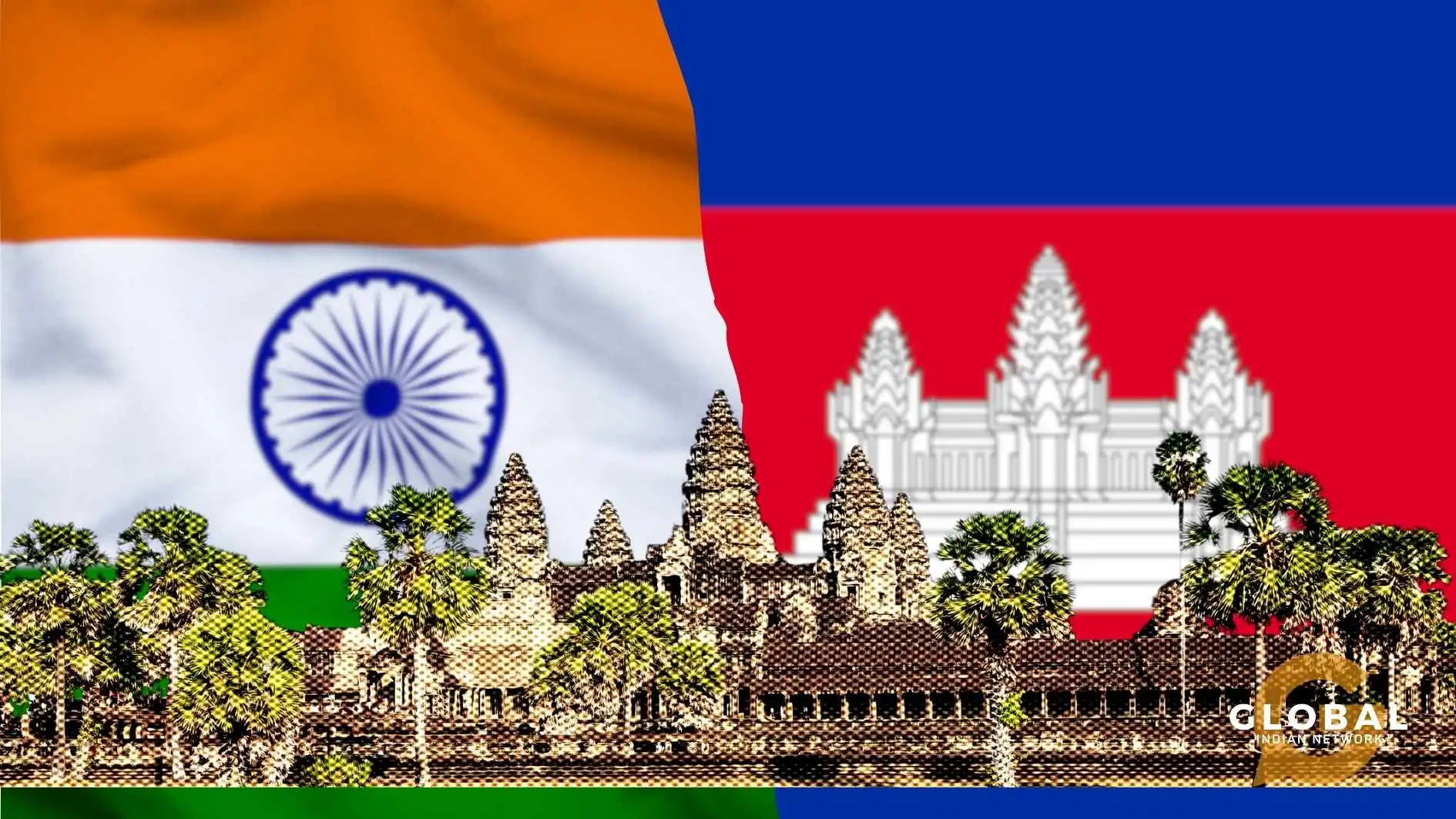Across centuries, nations have been bound together by a shared spiritual heritage—an invisible yet enduring thread that transcends borders, languages, and politics. From East Asia's meditative traditions to the Mediterranean's philosophical echoes, civilizations have exchanged sacred wisdom, profoundly influencing one another.
Temples, prayers, and rituals intertwine across cultures, preserving their shared memory. Specific routes transported ideas of divinity, morality, and meaning. Mythologies, from India's epics to Greece's legends, reflect the eternal battle between good and evil, the quest for enlightenment, and humanity's longing for connection. This spiritual cross-pollination has shaped art, literature, and governance, reinforcing the universal human desire for peace and purpose. Nations that honor these connections foster diplomacy based on mutual respect and faith as a bridge.
Today, as societies navigate modern challenges, rediscovering this shared spiritual heritage offers more than nostalgia—it presents a way forward, a reminder that beneath worldly differences, the soul of civilization has always spoken a common language. This article explores new ways of enhancing the spiritual synergy between India and Cambodia.
Table of Contents
Shared Spiritual Heritage: India and Cambodia
India and Cambodia share a deep spiritual connection due to their religious history. Buddhism, originating in India, was introduced to Cambodia by monks, traders, and missionaries in the 3rd century BCE. Hinduism, also introduced by Indian traders, deeply influenced Khmer civilization from the 1st century CE. This cross-pollination of faiths created a unique spiritual tapestry where Hindu and Buddhist traditions coexisted, merged, and evolved, forming the foundation of Cambodian culture and identity.
Spiritual exchanges have significantly influenced civilizations, transcending borders and fostering shared traditions. For instance, India and Thailand incorporated Hindu and Buddhist ideas into royal ceremonies and temple architecture, while Japan adopted Buddhism from India via China and Korea. Trade routes, such as the Silk Road, played a crucial role in these exchanges, with Indian merchants introducing Ramayana-inspired art in Bali and Buddhist pilgrims spreading scriptures across the Himalayas.
These migrations weren’t just spiritual; they fostered diplomatic alliances, shaped governance models, and influenced social structures. The legacy of these exchanges continues today, reminding nations that their shared spiritual past forms a bridge for modern cultural and economic collaboration.
India-Cambodia Spiritual Connection
India and Cambodia have a spiritual connection dating back to the 1st century CE when Indian traders introduced Hinduism to the Khmer Empire. By the 3rd century BCE, Buddhist monks brought teachings to Cambodia, shaping its religious landscape. Cambodian rulers like Ishanavarman I built temples reflecting Indian architectural styles, solidifying Hindu-Buddhist fusion.
By the 14th century, Cambodia transitioned to Theravada Buddhism, integrating Hindu elements into its rituals. Today, remnants of this exchange are visible in Angkor Wat's Hindu-Buddhist iconography and Khmer dance forms.
Angkor Wat: A Symbol of Spiritual Synthesis
Angkor Wat, Cambodia's largest religious monument, was originally a Hindu temple dedicated to Vishnu in the early 12th century. In the 14th century, it was transformed into a Buddhist sanctuary, incorporating Buddhist statues and motifs with Hindu iconography. Today, it is revered by both Hindus and Buddhists, showcasing spiritual evolution and cultural harmony through its stones. The temple features five towers representing Mount Meru and a moat evoking the cosmic ocean, connecting India and Cambodia through shared mythological narratives.
Angkor Wat is a living bridge between India and Cambodia, symbolizing the transcendence of borders and the power of shared heritage. Its walls, carvings, and towers invite travelers to rediscover their common roots and celebrate the flow of divine wisdom across time and space, showcasing the enduring power of shared heritage.
India and Cambodia are honoring their past by promoting their shared heritage, fostering understanding, cooperation, and mutual respect for the present and future.

Architectural and Artistic Influence
Cambodia's art, architecture, and rituals reflect its cultural heritage, with Indian epics, the Sanskrit language, and Hindu deities becoming integral to society. Buddhism, introduced by King Ashoka, enriches the spiritual fabric, with Angkor Wat as an iconic monument. Cambodia has Indian-influenced temples like Preah Vihear and Banteay Srei, and modern art and music, like classical Khmer dance, mirror Bharatanatyam's gestures and storytelling techniques.
Historians emphasize India’s philosophical imprint on Khmer art. Dr. Uday Dokras notes that Cambodian temple architecture evolved from Gupta-era designs, while Yon Bunyom highlights Buddhism’s role in shaping Cambodia’s artistic identity. The Khmer Empire’s adaptation of Hindu-Buddhist motifs remains a testament to India’s lasting cultural impact, reinforcing the shared spiritual heritage between the two nations.
Economic and Cultural Impact of Spiritual Tourism
India-Cambodia spiritual tourism is expanding, with Indian arrivals rising 13.2% in 2024 to 69,063 visitors. Generating $6.7 million in revenue, this sector plays a pivotal role in Cambodia’s economy.
Compared to Thailand’s Buddhist retreats and Indonesia’s Hindu pilgrimage sites in Bali, Cambodia is refining its approach. New religious tours at Angkor Wat aim to boost engagement, emphasizing its Hindu origins to deepen Indian visitors’ connections.
Efforts to enhance infrastructure include direct flights from New Delhi, Kolkata, and Siem Reap and airport and expressway upgrades like the Techo International Airport expansion. These initiatives and curated cultural experiences strengthen India-Cambodia ties, stimulate local economies, and promote shared heritage appreciation.
Contemporary Spiritual Collaboration
India and Cambodia are enhancing their spiritual heritage through cultural preservation, restoration, and diplomatic collaboration, as reaffirmed in the 3rd India-Cambodia Foreign Office Consultations. This includes India's ongoing restoration of Ta Prohm Temple.
Digital platforms preserve ancient connections, with India's Mekong Ganga Cooperation initiative establishing the Asian Traditional Textile Museum in Siem Reap. Virtual reality and AR projects are being developed to reconstruct Cambodian temples, making heritage more accessible digitally.
India's Archaeological Survey is actively restoring Angkor Wat and Preah Vihear, ensuring historical accuracy and conservation. This demonstrates India's commitment to safeguarding Cambodia's religious heritage and promoting cultural diplomacy.
The 3rd India-Cambodia Foreign Office Consultations occurred in Siem Reap, Cambodia, on March 10, 2025. The discussions covered political cooperation, trade, investment, defense, security, development assistance, heritage conservation, and consular issues. Both sides expressed satisfaction with progress and explored new cooperation avenues in health and digital technologies.
On May 2, 2025, the Cambodian Private Commercial Center (CPCC) held two high-level meetings in New Delhi to strengthen Cambodia-India ties. The meetings, led by Oknha Lim Bunsor and Ambassador Jas Sohl for the Global Indian Network, focused on investment opportunities, spiritual tourism, agricultural goods and textiles trade, water infrastructure, and cultural diplomacy. The Global Indian Network initiative aims to strengthen international partnerships through trade, culture, and dialogue.
Rajiv P. Kapahi, Strategic Advisor for India Inc. at Global Indian Network, emphasizes the transformative role of India's Public Sector Undertakings in global economic growth.
Spiritual Diplomacy
As Ambassador of Cambodia to India, Her Excellency Rath Many plays a key role in spiritual diplomacy, fostering cultural, religious, and tourism-based collaborations between the two nations. She has actively engaged in bilateral discussions to strengthen heritage conservation, spiritual tourism, and cultural exchanges.
Her contributions to spiritual diplomacy include promoting Angkor Wat as a Hindu-Buddhist tourism hub, encouraging joint restoration projects for Cambodian temples with Indian support, and facilitating cultural forums for deepening religious ties.
ALSO READ: India and Cambodia Deepen Ties in Trade, Tourism, and Tradition Through CPCC India’s Efforts
Conclusion: Path Forward
India and Cambodia share a spiritual legacy woven into the very fabric of their histories, shaped by centuries of philosophical exchange, artistic inspiration, and religious evolution. From the towering grandeur of Angkor Wat to the meditative teachings of Buddhism that traveled from India’s heartlands to Cambodia’s shores, this shared heritage transcends geography and time.
In recognizing this profound connection, both nations have the opportunity to strengthen their cultural and diplomatic bonds through renewed dialogue and collaboration. The resurgence of spiritual tourism, cultural exchange programs, and joint conservation efforts for sacred monuments reflects a growing commitment to honoring their intertwined past. By embracing this shared legacy, India and Cambodia pay homage to their ancestors' wisdom and open doors for deeper mutual understanding, economic partnerships, and global recognition of their rich traditions.
As both nations move forward, celebrating their spiritual synergy can serve as a bridge between countries and generations, faiths, and aspirations. In rediscovering this collective wisdom, India and Cambodia reaffirm the timeless truth that spiritual heritage is not confined to borders; it is a living force that continues to inspire, unite, and guide the world toward harmony and enlightenment.

Instead of simply reflecting on the past and the present, we conclude by looking ahead:
What innovative education, tourism, or religious diplomacy collaborations could strengthen India-Cambodia relations?
How might AI and technology help preserve and promote our shared spiritual heritage for future generations?
How can local communities in both countries be empowered to participate actively in spiritual tourism and heritage conservation?
In what ways can cultural exchange programs be designed to foster greater youth involvement and cross-cultural understanding between India and Cambodia?
We believe that the above questions are paramount to world peace, a rarity today. Peace is the first step to prosperity and beyond.









